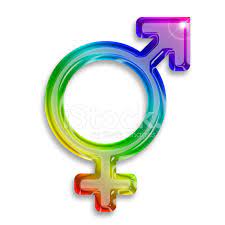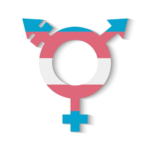Forced Fem Fiction, often referred to simply as "Forced Fem," delves into narratives centered around themes of gender transformation, often presenting male characters who undergo a forced transition into femininity. This subgenre has garnered attention for its unique approach to gender roles and identity, blending fantasy with psychological elements. While it remains a niche within the broader literary landscape, its dedicated following and distinct themes make it a compelling subject to explore.
In this article, we’ll unpack the various facets of Forced Fem Fiction, from its origins to the controversies it sparks. Whether you’re a seasoned reader or just curious about this intriguing genre, there’s much to discover about who reads it, what themes resonate, and how one might embark on writing their own stories within this realm.
What Is Forced Fem Fiction? A Quick Overview
Forced Fem Fiction is a niche genre that primarily focuses on stories where male characters are coerced or forced into adopting a feminine identity. This can manifest in various forms, including physical transformation, behavioral changes, or societal pressure. The narratives often explore the psychological impacts of this transformation, delving into themes of power dynamics, identity, and societal expectations regarding gender.
The genre can be both fantastical and realistic, appealing to those who enjoy speculative fiction as well as readers interested in deeper explorations of gender identity. While some stories may carry a more serious tone and focus on the emotional journey of the characters, others may lean into humor or absurdity, showcasing the wide range of interpretations within Forced Fem Fiction.
The Origins of Forced Fem Fiction in Literature
Forced Fem Fiction can trace its roots back to earlier literary works that explored gender roles and transformation. Classical literature, Greek myths, and even fairy tales often featured characters who underwent significant changes in their identities, albeit not always in the explicit ways seen in modern Forced Fem narratives. As societal understanding of gender evolved, so too did the representation of these themes in literature.
In contemporary culture, Forced Fem Fiction gained traction with the rise of fan fiction platforms and online communities. As writers began to explore their own fascinations with gender fluidity and transformation, the genre found a home in various subcultures, particularly those involving BDSM and fetish communities. This evolution allowed for a more open discussion of gender identity and power dynamics, leading to the present-day conception of Forced Fem.
Key Themes and Tropes in Forced Fem Writing
When reading or writing Forced Fem Fiction, one might encounter several recurring themes. One prominent theme is the exploration of power dynamics, where the act of forcing a character into femininity often highlights the complexities of control and submission. This theme can serve as a lens to examine societal norms and the expectations placed on individuals based on their gender.
Another common trope is the "reluctant transformation," where characters initially resist their circumstances but gradually come to accept or embrace their femininity. This journey can vary greatly, from comedic misunderstandings to profound self-discovery. Such tropes not only provide entertainment but also facilitate discussions on gender identity and the fluidity of gender roles.
Understanding the Audience: Who Reads Forced Fem?
The audience for Forced Fem Fiction is diverse, often comprising individuals who are curious about gender dynamics, transformation narratives, or who simply enjoy fantasy elements. Readers may come from various backgrounds and orientations, with some drawn to the genre for its exploration of identity and others for the kink and fetish aspects.
Additionally, fans of the genre often engage with it through online communities, where discussions around themes, character development, and personal interpretations flourish. This sense of community can create a welcoming space for readers to explore their own identities and understandings of gender, making Forced Fem Fiction an appealing outlet for many.
Exploring the Controversies Surrounding Forced Fem Fiction
Despite its growing popularity, Forced Fem Fiction is not without controversy. Critics argue that the genre can perpetuate harmful stereotypes about gender identity and the nature of femininity. Some contend that forced transformations can reinforce the idea that femininity is something to be imposed rather than embraced, raising ethical concerns regarding consent and representation in the narratives.
Conversely, advocates for the genre argue that it can serve as a form of empowerment and self-exploration. They suggest that when approached thoughtfully, Forced Fem stories can challenge traditional notions of gender and offer new perspectives on identity. This ongoing debate highlights the importance of context and intention behind both the writing and reading of Forced Fem Fiction.
Popular Works and Authors in the Forced Fem Genre
Several authors and works have made a significant impact in the Forced Fem genre, each bringing their unique voice and perspective. Notable figures often include those who publish on platforms like Archive of Our Own (AO3) or Wattpad, where stories within this niche can be easily shared and consumed. Some popular stories have garnered substantial followings, showcasing a mix of humor, drama, and fantasy elements that resonate with readers.
In addition to online writers, there are also published authors who have explored Forced Fem themes in their works. While these may not always be labeled explicitly as Forced Fem Fiction, they often contain similar elements of gender transformation and identity exploration that appeal to fans of the genre.
How to Write Your Own Forced Fem Stories
If you’re interested in writing Forced Fem Fiction, there are a few key considerations to keep in mind. First, it’s crucial to approach the subject with sensitivity and awareness of the complexities of gender identity. Researching the experiences of those who navigate gender fluidity can provide valuable insights, allowing for more authentic and nuanced storytelling.
Additionally, think about the themes you want to explore. Whether it’s power dynamics, self-acceptance, or societal pressures, having a clear focus can help guide your narrative. Developing well-rounded characters who undergo meaningful transformations will enhance the depth of your story, engaging readers on multiple levels.
The Future of Forced Fem Fiction: Trends to Watch
As societal conversations around gender continue to evolve, the future of Forced Fem Fiction looks promising. We may see more inclusive portrayals that challenge traditional binary notions of gender, allowing for a broader range of identities and experiences to be explored. This could lead to rich narratives that reflect the complexities of modern gender politics and personal identity.
Moreover, the rise of diverse platforms for storytelling—like podcasts, web series, and visual novels—might allow Forced Fem themes to reach new audiences. As more creators experiment with multimedia approaches to storytelling, the genre may find fresh ways to engage readers and viewers alike, expanding its reach and relevance in contemporary culture.
Forced Fem Fiction, with its unique blend of fantasy, identity exploration, and social commentary, offers a fascinating glimpse into the complexities of gender and transformation. Whether you’re a reader, a writer, or simply curious about the genre, understanding its themes, audience, and controversies can enrich your appreciation for these narratives. As the genre continues to evolve, it promises to remain a compelling area of exploration for those intrigued by the nuances of identity and the human experience.

